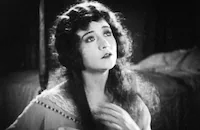The Belle of Broadway
Cast & Crew
Harry O. Hoyt
Betty Compson
Herbert Rawlinson
Edith Yorke
Armand Kaliz
Ervin Renard
Film Details
Technical Specs

Synopsis
Adèle, the idol of the Paris theater in 1896, is jealously guarded by her husband from the open admiration of the Count Raoul de Parma; but he deserts her, taking with him their only child, Paul. Years later, earning a meager living, Adèle meets a young American, Marie Duval, who performs in a revue. In a moment of caprice, Marie tries on Adèle's old costume for Du Barry; a plan is then devised whereby Marie, under the tutelage of Adèle, becomes the darling of Paris and is presented as the rejuvenated actress. Paul Merlin, now grown to manhood, falls deeply in love with Marie, and the count reenacts his passionate declaration. The count invites Marie to his apartment for dinner, discovers her masquerade, and forces his attentions on her; but she is rescued at the last minute by Paul, who, following a harmless duel, is reunited with his mother and Marie.

Director
Harry O. Hoyt
Cast

Betty Compson
Herbert Rawlinson

Edith Yorke

Armand Kaliz
Ervin Renard
Max Berwyn
Albert Roccardi
Edward Warren
Tom Ricketts
Edward Kipling
Wilfrid North
August Tollaire
Crew

Film Details
Technical Specs

Articles
The Belle of Broadway on DVD
The film begins in the 1890s with "Madame Adele," the toast of the Paris theater world, in her youthful prime and enrapturing audiences with her role in Du Barry. But her husband is consumed with jealousy, especially over the aggressive affections of a rival, Count Raoul (Armand Kaliz). The husband promptly packs up and leaves one day, taking their baby son with him. Adele is devastated. Cut to the present day, with Adele (Edith Yorke) now an old(er) woman, down on her luck, struggling to find acting work...and still mourning the loss of her son. A theater producer tells her that she is too old for any acting jobs, but that were she still youthful, he would revive Du Barry. He doesn't think, of course, that it could literally happen. But soon thereafter, on a lark, Adele has the young woman who looks after her, Marie (Betty Compson), try on the old Du Barry costume dress. Lo and behold, she is the spitting image of Adele in her youth, and Adele now hatches a plan to fool the theater producer, and the world, by making them think that Marie is Adele, magically rejuvenated by means of plastic surgery.
Marie becomes a sensation, but Adele's old suitors -- now all old men -- start comically hounding her, thinking she's Adele, and the Count is still around to cause trouble, too. And the young man (Herbert Rawlinson) who actually loves Marie happens to be Adele's long-lost son, leading to amusing complications that finally start the thrust of the film. If one can swallow that coincidence, the rest of the picture is quite enjoyable.
It helps, too, that the movie is well paced and the cast is so appealing across the board, with plenty of Hollywood veterans giving a professional show. Herbert Rawlinson, for instance, about 40 when he made this film, had hundreds of credits going back to 1911. Upon the transition to sound a couple of years later, he moved into character parts, often uncredited, in more than 100 further films, and worked consistently to his death in 1953. His final film appearance was in Ed Wood's Jail Bait (1954).
Betty Compson was a major star at Paramount in the silent era, and at the time of this film was married to actor-director James Cruze. Their divorce in 1930 would lead to the loss of most of her fortune. Still, she made a lasting impression in The Docks of New York (1928), was nominated for an Oscar for The Barker (1928), and continued to act in the talkie era, until her retirement in 1948. She also re-married and lived until 1974.
And in a major supporting role is lovable character actor Tom Ricketts, a man with over 200 acting credits stretching back to 1909, plus many more directing and writing credits. Most of his ensuing talkie parts were uncredited, but he will be recognizable to modern movie fans from films like After the Thin Man (1936), in which he played an ancient butler, as well as The Invisible Man (1933) and Son of Frankenstein (1939), his final picture.
The Belle of Broadway's title is rather mysterious, as the film is set in Paris, not New York. The plot probably inspired the play Ever Green, written four years later by playwright Benn W. Levy and adapted into the 1934 Jessie Matthews vehicle Evergreen.
Sony's made-on-demand DVD-R is splendid. The film looks downright amazing with a gorgeous image, including some tinted scenes. Christopher Caliendo's new, original, and lovely score, heavy on piano, enhances the image very well.
By Jeremy Arnold














